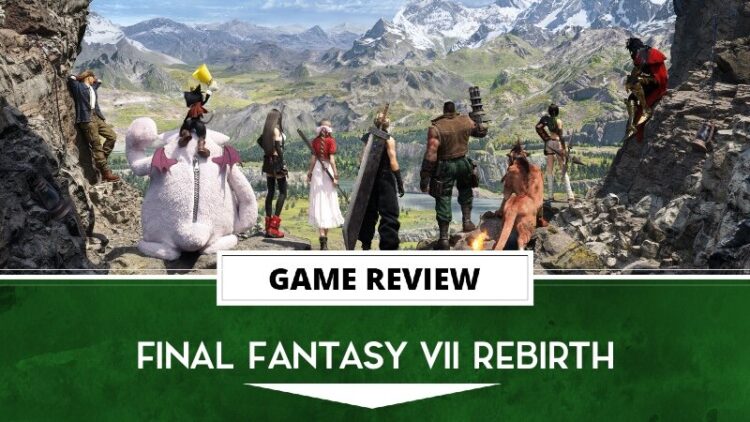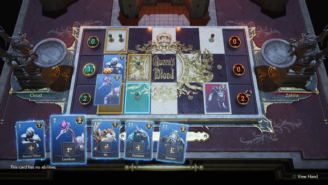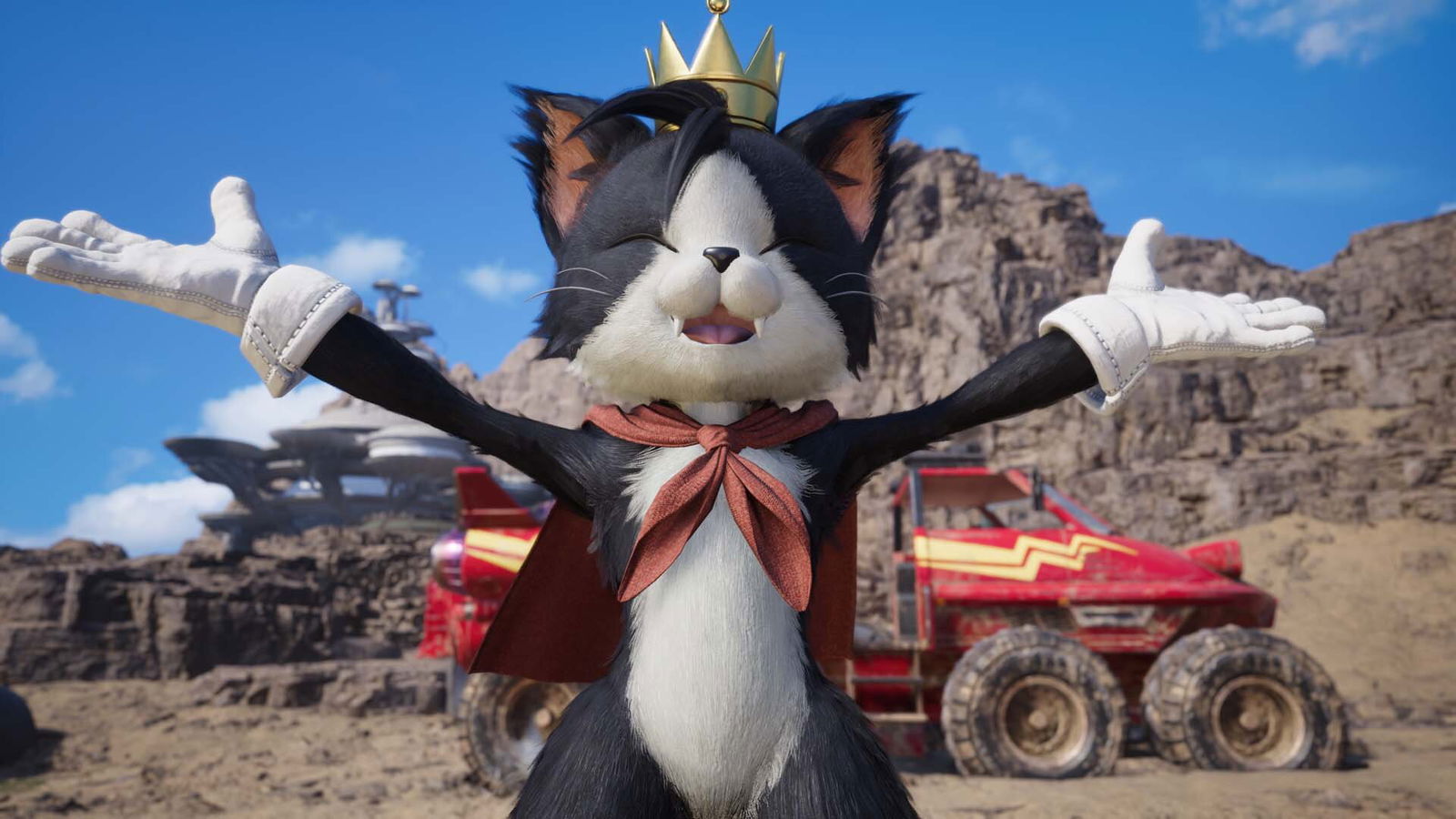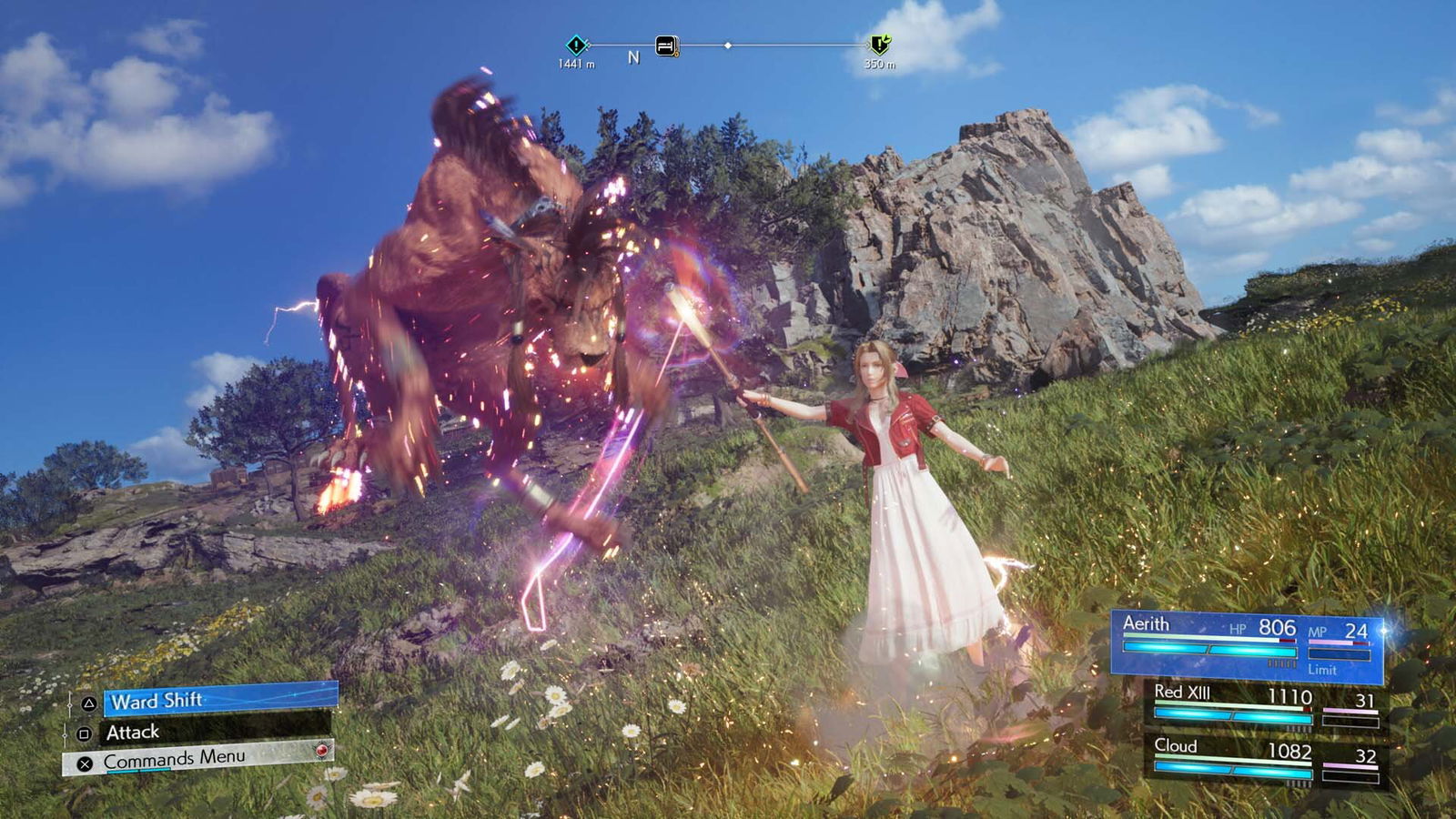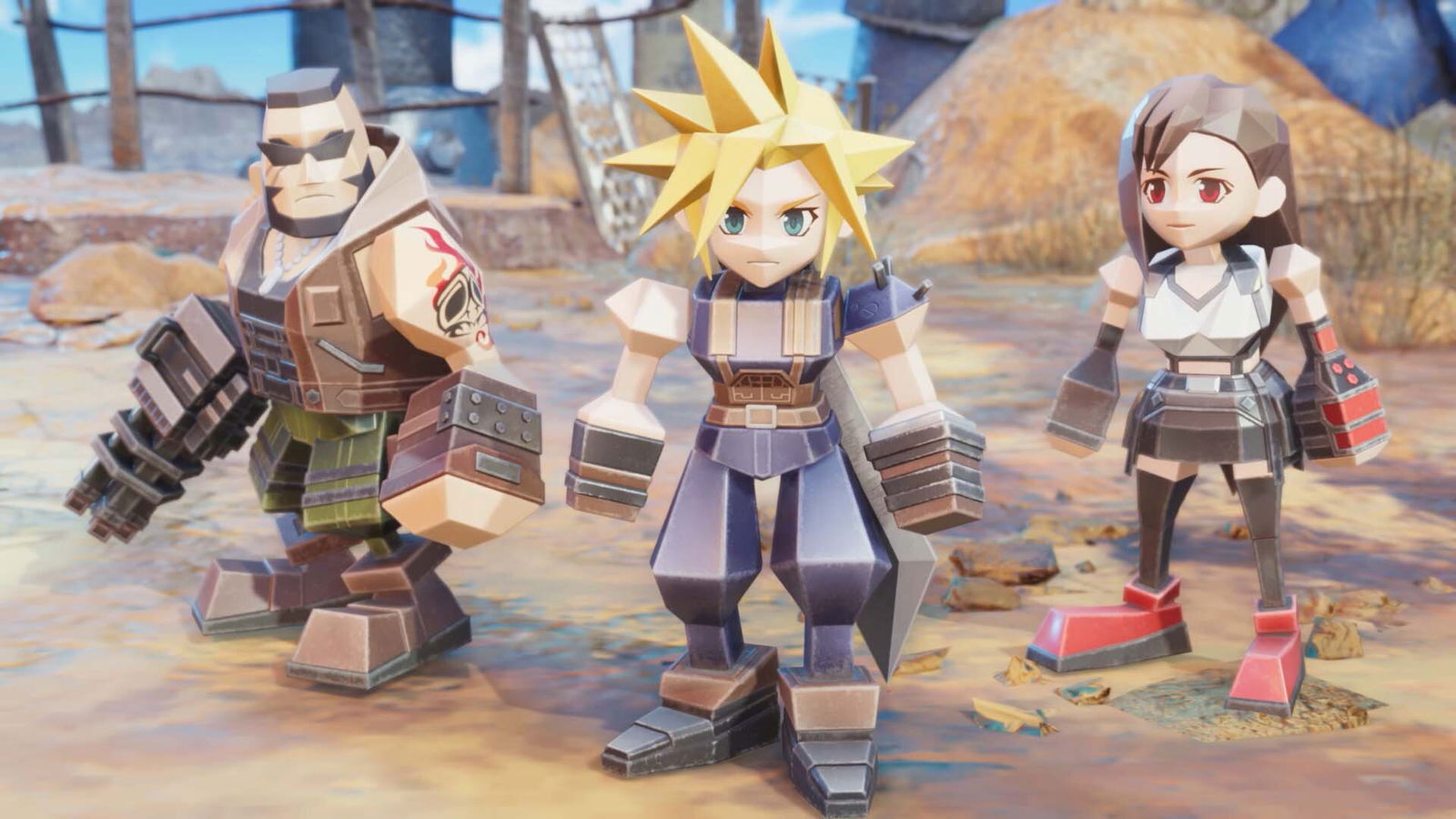When Square Enix announced the much-anticipated Final Fantasy VII Remake, folks were a bit perplexed to find out that it would only adapt the Midgar section of the 1997 original. Later revealed as a remake trilogy, Final Fantasy VII Rebirth has the unenviable role of serving as the middle chapter. And yet, in taking the adventure out of the city and across a vibrant world, it quite likely may prove the high point of the trilogy.
Game Name: Final Fantasy VII Rebirth
Platform: PlayStation 5
Developer: Square Enix
Publisher: Square Enix
Release Date: February 29, 2024
Price: USD 69.99
Final Fantasy VII Rebirth takes no time to get started. It picks up right at the end of 2020’s Remake, showing our heroes making tracks out of Midgar. With the nefarious Shinra company in hot pursuit, Cloud, Aerith, Tifa, Barret, and Red XIII journey on in a pursuit of their own: searching for Sephiroth, the enigmatic villain with perilous plans for the planet.
Their trip takes them to many colorful locales, where we meet even more colorful characters. New friends join the party. And, of course, there are moments of excitement, wonder, sadness, and joy. I found the narrative literally jaw-dropping on multiple occasions for a variety of reasons. You may wonder how true Final Fantasy VII Rebirth stays to the 1997 original. Generally, the shape of the original story remains intact. But from time to time, Rebirth remixes the who, where, when, or why. And that’s all I’ll say about that.
The Fellowship Strikes Back
As the excellent middle chapter of a trilogy in the making, Final Fantasy VII Rebirth wears inspiration from Star Wars: The Empire Strikes Back proudly on its sleeve. Everything from the twists to the aesthetics and certain lines (you’re our only hope!) draw from the beloved film. Producer Yoshinori Kitase even cited it as an inspiration for the game. And it clearly borrows the right elements in its shared deeper explorations of themes and characters.
But Rebirth also reminds me of a different part of a stellar trilogy: The Fellowship of the Ring. Even though Rebirth is part two, it still marks the start of its characters’ journey across the world. Similar to the first Lord of the Rings movie, Final Fantasy VII Rebirth has a long runtime yet feels like a breeze as it rarely lingers in one place for too long, and tops each set piece with the next. Both fantasy stories have lovable characters who grow and change in an epic quest filled with mountains, meet-ups, monsters, and more.
And so for the first half of the game, every time I had a favorite chapter, the next one managed to outdo it. The Wall Market excursion back in Remake marked a high point by combining combat and role-playing with excursion and excitement. With Rebirth, that kind of off-the-wall energy becomes the rule, not the exception.
It helps that Rebirth adopts a stretch of the original game known for madcap moments. From riding a dolphin to taking part in a parade to having a beach day, it doesn’t let up. And where the original lacked flair? It adds its own. The cargo ship section of the original becomes a pleasure cruise in Rebirth, with some of the more laugh-out-loud scenes in the game accompanying an onboard tournament of Queen’s Blood—a new deck-building mini-game.
The Rhythm of a Remake
It’s impressive that Rebirth manages to consistently one-up each chapter with exciting set pieces that serve as conduits for just as exciting gameplay. The first half offers the most pure fun I’ve had with a game in years. And when Rebirth can’t get any more rambunctious at the halfway mark? The second half of the game looks inwards. After the party makes it to the western continent, the narrative switches gears to become more about the characters and their individual arcs. It fosters intrigue with visits to places of significance for each of the main characters.
That said, about three-quarters of the way in, missions begin to get drawn out longer than Sephiroth’s sword. It’s a pity, since until then the game is otherwise so well-paced, never keeping you in an objective longer than needed. It feels a bit like the development team went all out for so long that at a certain point they resigned to the repetitive corridor, fight, corridor, fight formula that padded out Remake. And while the prolonged Professor Hojo lab escape felt somewhat justified in that installment, another one here is unnecessary. Similarly, another colosseum tournament starts out fun but overstays its welcome by the sixth(!) round.
Arguably, Remake needed some prolonging to expand a short section of the 1997 original to a full game. In adapting much more and clocking in at over 50 hours, Rebirth could’ve done just fine without the extra fluff. Still, these moments only stick out like a Cactuar’s needles because the rest of the game respects the player’s time so wonderfully. And even when an objective goes on for too long, the combat and characters are so engaging that there’s still enjoyment to be had.
Let the Battles Continue
Final Fantasy VII Rebirth doesn’t mess with the core formula of the excellent tactical real-time combat from Remake—it updates it. Characters can still use basic attacks anytime and fire off special attacks by charging the Active Time Battle gauge to pressure enemies. Rebirth adds more playable characters with more intricate move sets than the last game’s Fab Four.
But the biggest change comes with new combat mechanics added across the board. Characters now have Combat Synergies—unique team-up moves—as well as access to new attacks and Summons. The embarrassment of riches may seem overwhelming at first. However, the game goes to pains to explain all the new mechanics. Once I got the hang of them, I found that the variety offered just the right amount of strategy while keeping combat fast-paced.
Case in point, I initially stayed clear of using newcomer Red XIII, who specializes in countering attacks. Once I figured out how to use him, I realized Red XIII is an absolute beast, pun fully intended—but no less true. Though weak at first, he can block attacks to charge up a Vengeance meter. Any time it has some charge, Red XIII can unleash Vengeance Mode, dealing a devastating amount of damage while draining HP from enemies. In baseball terms, he’s the closer.
Similarly, new party member Cait Sith also plays weak at first. For him, getting on his Moogle mount bulks him up. Then, utilizing special abilities from his various megaphones can pack quite a wallop, making him the glass cannon of the game.
Much of the core strategy still comes from finding enemy weaknesses and distributing moves and Materia accordingly. While it can be tempting to assign Materia to each character permanently, reconfiguring for tough encounters can handily turn the tide. This especially comes into play when the difficulty ramps up in the last few chapters. One solo battle mini-boss killed me over and over. But when I moved all my Materia to exploiting a weakness, I felled it in less than a minute.
That said, most of the time, the game allows players to select any two party members to fight alongside Cloud. Certain missions will specify a team, oftentimes removing Cloud from the equation altogether. I actually appreciated these segments, as they encouraged me to use characters and pairings I wouldn’t normally employ. In fact, my admiration for the irregular movesets of Red XIII and Cait Sith came from having to utilize them in special situations.
Final Fantasy VII Rebirth Switches It Up
Rebirth brings back one of my favorite combat mechanics from the previous game: Weapon Proficiency. Instead of locking special abilities to their designated weapon, utilizing an ability allows for a “proficiency.” The character proficient in that ability can then use it regardless of whether they wield the corresponding weapon. This encourages players to try out every new weapon with little drawback. Don’t like a given weapon but want its ability? Just master the ability and then switch to another sword/staff/megaphone/etc.
And for the added combat mechanics, Synergies come in the form of Skills and Abilities. Skills quickly offer a basic team-up attack without costing magic or a bar of the Active Time Battle gauge. Abilities require pairs to have used a certain number of moves, but unleash strong attacks with effects such as additional Limit Break movesets. My personal favorite has to be Sweet-and-Sour Salvo, whereupon Aerith and Barret don matching sunglasses. Oh, and this also expands the stagger meter of an enemy. That’s cool, too.
It’s Not Chemistry, It’s Synergy
Synergy Abilities also mark a neat synergy between combat and narrative. Having Cloud utilize a new Synergy Ability with a given character strengthens the bond between them. In turn, this leads to different interactions throughout the story. I bonded with Aerith right away, and was pleasantly surprised to see her crop up in a number of unique interactions.
Character bonds can also grow from side quests, which injects new life—or cells, if you prefer—into the format from Remake. Personally, I didn’t mind the side quests in Remake, but they could feel repetitive. Rebirth blows them out of the Lifestream with side quests that criminally feel like they could be main content. An excursion to pick flowers early on sees Aerith taking over to reminisce about her time back home, as her theme plays over your arrival in the flower meadow. On a side note, the soundtrack is marvelous, elevating certain moments to epic proportions.
Side quests make up a fraction of the optional content in this buffet. Chadley, a familiar face from Remake, facilitates helping players gather intel in any of the world’s large and lavish regions. Intel gathering comes in various forms, from combat encounters with monsters and Summons to discovering Lifesprings and activity-unveiling Remnawave Towers. The sheer variety kept me engaged as no one intel request lasts too long, and each has unique mechanics.
To carry these out, traveling across regions happens by plane, buggy, and, of course, Chocobo. While Final Fantasy VII Rebirth is far from the first to have a Chocobo mount, riding them has never been this fun. They handle well, charging over most terrain rather than getting stuck. Double-tapping R3 makes them sprint for a massive boost of speed. I actually laughed out loud watching my Chocobo blast across the grasslands like an over-caffeinated Big Bird.
Both the world regions and the linear story-missions include more mini-games than you can shake a Buster Sword at. Many prove fun, but I found two most memorable. The aforementioned card game Queen’s Blood proves easy to learn and addictive, with the game’s wackiest NPCs serving as challengers. Fort Condor returns in its mini-game form from Intermission, the Remake DLC introducing Yuffie as a playable character. However, Rebirth gives Fort Condor updates that I didn’t know I needed. Most excitingly, players can deploy Cloud, Barret, and Tifa as special fighters once per match. And, in a fun nod to the original Final Fantasy VII, they appear in their 1997 polygon form.
The Feel of Final Fantasy VII Rebirth
Speaking of which, Final Fantasy VII Rebirth has style and attention to detail for days (Actually, make that months, as I look forward to replaying to see more). Each region has a distinct aesthetic, and towns feel lived in with bustling streets and a variety of sights to take in. Even single buildings have much to admire. Take the Ghost Hotel, for instance, with macabre paintings along the walls, spooky trinkets to interact with, and ghoulishly on-theme voice acting for the hotel employees.
And, of course, I have to give a nod to the performances. The entire cast does a fantastic job bringing to life characters that gamers have known for almost 30 years. Those returning from Remake evolve their performances well, and newcomers make strong impressions. In a game all about journeys—physical and metaphorical—each primary player takes us on an emotional ride. That said, Suzie Yeung and Paul Tinto deserve special commendation for turning two traditionally lesser-liked characters into two of the most lovable. Yeung’s pathos humanizes the otherwise frenetic Yuffie, while Tinto’s rich and wry Scottish brogue adds charm and humor to the conniving Cait Sith. After all, a grand quest is all the more exciting with grand characters.
And so, Final Fantasy VII Rebirth succeeds on multiple fronts: as a retelling of the 1997 original, a sequel to the 2020 remake, and a contemporary remake. To elaborate on that last point, Rebirth sets the gold standard of what a game remake should do. It adapts just about everything from the original game while mixing in improvements and new features. Sure, I’ll still go back to the original at some point for the full story in one game. But for the section adapted, Rebirth reimagines an iconic adventure with pomp and panache.
Review Disclosure Statement: Final Fantasy VII Rebirth was provided to us by Square Enix for review purposes. For more information on how we review video games and other media/technology, please review our Review Guideline/Scoring Policy.
Final Fantasy VII Rebirth
Summary
Final Fantasy VII Rebirth greatly expands upon the world of Remake, both literally and figuratively. The map proves massive, but its various activities make it a joy to explore. It adapts the most exciting section of the original game, leaning into the adventurous and ridiculous elements. Though it can’t always maintain that momentum, it’s remarkable how much variety, exploration, and wonder this game provides. Rebirth arrives as one of the best games of the past decade.
Pros
- Strategic and dynamic combat
- An engaging story that balances between retelling and reimagining
- Detailed visuals and world-building
- Humorous and heartfelt writing and performances
Cons
- A couple of late game segments that lose momentum
- A tough task for the third part to top this
-
Final Fantasy VII Rebirth


